
When visiting Tokyo, you might be surprised by the many old-style Japanese restaurants! Some of these establishments have been around for well over 100 years.
Here, we'll introduce four old-style restaurants where you can enjoy authentic Japanese dishes that have been loved for long time. Each has a distinguished history and atmosphere that you're sure to love.
1. Komakata Dozeu (Est. 1801): Beloved for over 200 years
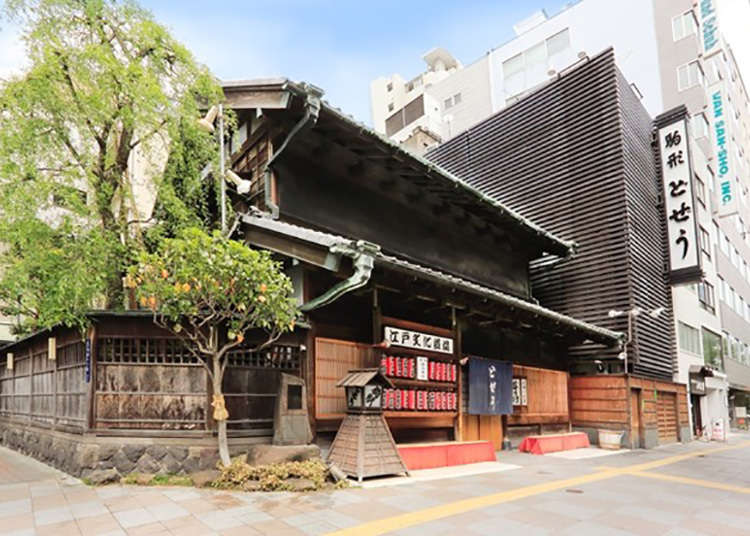
Komakata Dozeu is old-style Japanese restaurant established in 1801 on Tokyo's east side.
To get here, go straight from Asakusa Station in the direction to Kuramae Station on the Edo-dori Street along the Sumida River, and you'll see a restaurant with full of Edo period atmosphere on the right side in five minutes or so.
Komakata Dozeu is famous for its Dozeu (loach) pot, which is covered with plenty of fresh leeks.

Loaches prepared in an original method are rich in calcium, iron, and collagen and healthy flavor of the common people in the Edo period. It is now one of Washoku dishes that draws attention from the world.
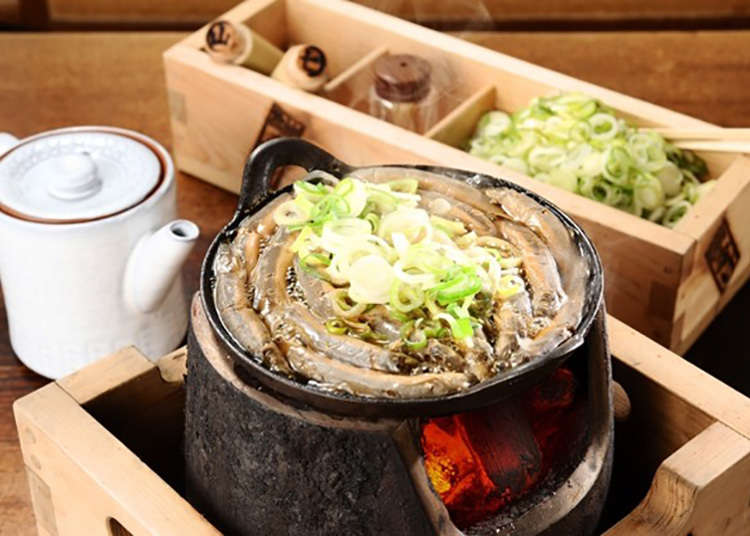
On the first floor, you will find a Japanese-style room, "Irekomi-zashiki," that kept the exact atmosphere as it was at the time of establishment. "Kanaita" placed on tatami (straw mat) serves as a table for a pot. You can also enjoy the Edo tastes, looking at the courtyard in a relaxed mood.
-
Komagata Dozeu駒形どぜう
- Address 1-7-12, Komagata, Taito-ku, Tokyo, 111-0043
2. Sakura-nabe Nakae (Est. 1905): Marks its name in history
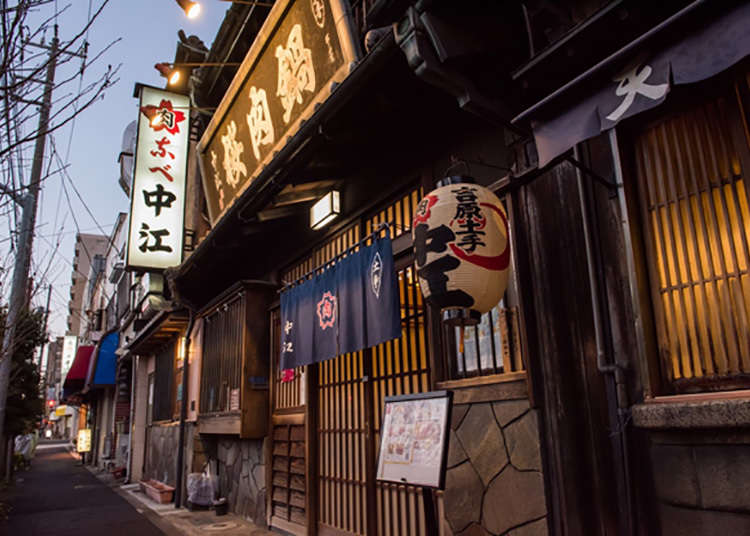
Sakura-nabe Nakae started its business in 1905 at Yoshiwaraomon. Sakura-nabe is a pot that uses horse meat, known in Japanese as "sakura meat" because the color reminds of sakura - cherry blossom.
It is said that, in the Meiji era, the dish was originated by guests at Yoshiwara by using horses sold at a nearby merchant. This episode shows the typical character of Edo people, as they were known to have prodigality and spend all the money they earn on the day.

The atmospheric Taisho-period building of Sakura-nabe Nakae, constructed 90 years ago, is registered as a national tangible cultural property. Historical items, including the calligraphy written by Mushanokoji Saneatsu, a Japanese novelist, are displayed in the restaurant.

Horse meat has low calories and low fat, as well as abundant collagen that preserves moisture in the skin. That may be the reason why every hostess of the restaurant through the generations has a reputation for "not getting older" and "having beautiful skSo do"! Do enjoy a taste of the secret of beauty.
-
Sakuranabe Nakae桜なべ 中江
- Address 1-9-2, Nihonzutsumi, Taito-ku, Tokyo, 111-0021
3. Kanda Yabusoba (Est. 1880): Loved by people in Edo
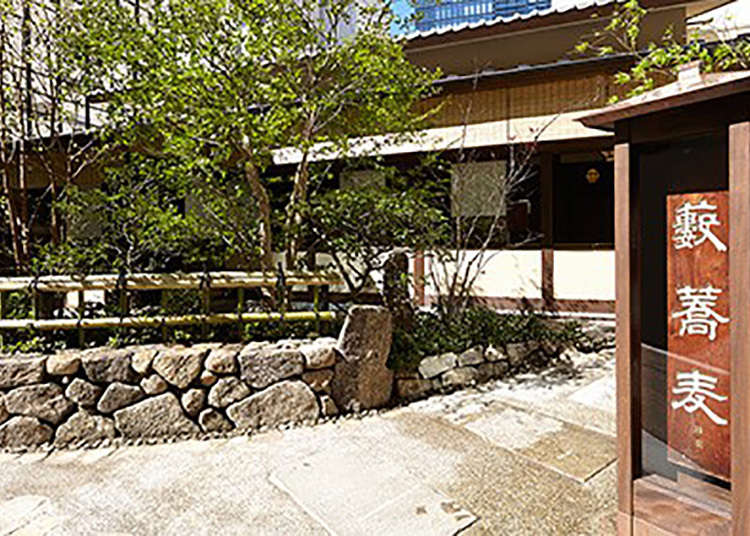
The dish that sophisticated people of Edo have loved is soba (buckwheat noodles). Ikenami Shotaro, a writer who was known as a gourmet, had often been to Kanda Yabusoba, one of the area's leading soba restaurants.
Yabusoba is deemed one of the "three major Edo soba" varieties, together with Sarashina Soba and Sunaba Soba, and is characterized by a salty soup that stimulates your appetite.
If you want to try something different, try an item like "Kamo-nuki," a delectable duck soup without the soba noodles.

Although a shop at Kanda has been renovated, many long-standing regular customers hear the hostess's voice echoing within the shop and feel, "this is Yabusoba!" and be happy. The reason this shop has been long loved must be because of the unchanged deliciousness and hospitality.
-
Kanda Yabusobaかんだやぶそば
- Address 2-10, Kandaawajicho, Chiyoda-ku, Tokyo, 101-0063
4. Asakusa Mugitoro (Est. 1929): Enjoy their full, gentle flavors
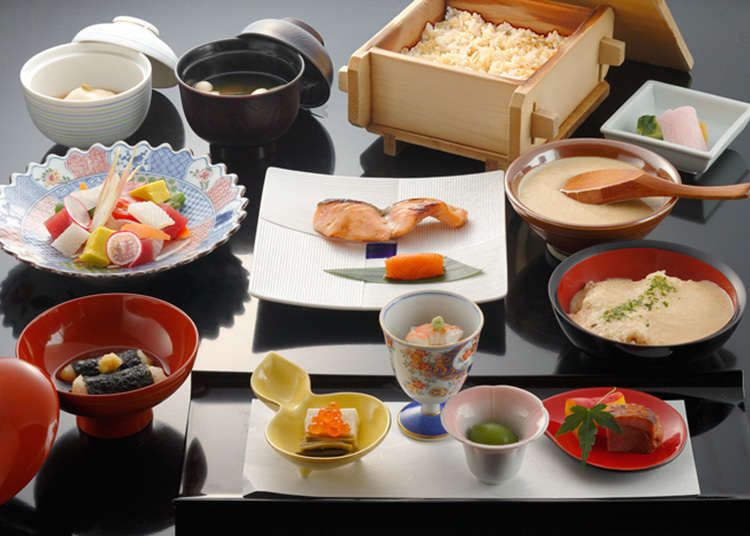
Since the establishment in 1929, Asakusa Mugitoro has provided dishes of mugitoro at Asakusa, where you can view the Sumida River and Komagatado.
Mugitoro is a dish with plenty of grated yams mixed with special secret broth over a bowl of freshly boiled barley. 100% of the grated yam is made from a very sticky yam with sweetness grown domestically. This dish is rich in dietary fiber, healthy, and gives you a feeling of fullness, making every patron happy.
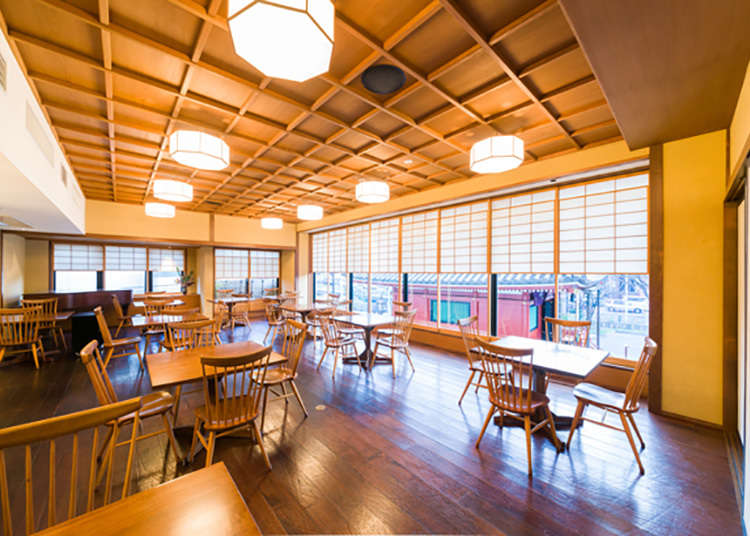
Because of lots of travelers around the area, you can get souvenirs at the restaurant. "Tororinto", which is made from brown cane sugar from Okinawa and Japanese yam, is the item that makes you addicted because of the fluffy texture and mellow flavor.
-
Asakusa Mugitoro浅草むぎとろ
- Address 2-2-4, Kaminarimon, Taito-ku, Tokyo, 111-0034
- Area
- Category
*Prices and options mentioned are subject to change.
*Unless stated otherwise, all prices include tax.
Popular Tours & Activitiess
Recommended places for you
-

NIHONRYOURIJAPANIHZUKYUIJIHNUSAKURAGAOKA
Japanese cuisine
Shibuya
-

Ginza Tosaryori Neboke
Japanese cuisine
Ginza
-

NIIGATASADONOSYUNTOJIZAKENODOGURONOAKUBIOKACHIMACHI
Japanese cuisine
Ueno
-

Tokyosumomatsuri
Japanese cuisine
Ginza
-
Menu

Ganso Kamameshi Haru
Japanese cuisine
Asakusa
-

Oto-Oto Ikebukuro
Japanese cuisine
Ikebukuro
-
Ad

Complete Guide to Ueno's National Museum of Nature and Science, the Perfect Place to Visit on Rainy Days or With Children
-

Strawberries, Style, and Tokyo’s Coolest Neighborhood: Winter Afternoon Tea in Kichijoji
by: Guest Contributor
-
Ad

Discover the "Miraculous Forest" in the Heart of Tokyo: The Institute for Nature Study (9 Minutes from JR Meguro Station)
-

First Japan Cherry Blossom 2026 Forecast Announced! Here's When & Where to See Sakura in Japan
-
Ad

(Opening in Jan 2026) 'THE SUMO LIVE RESTAURANT HIRAKUZA GINZA TOKYO!' 5 Exciting Ways to Experience the World of Sumo!
-

Japan’s Shinkansen Is About to Change Travel in an Unexpected Way
by: Guest Contributor
Inspiration for Accommodations
-

Enjoy Mt. Fuji from the Comfort of Your Room! Recommended Ryokan with Mt. Fuji View
-

Stay Near the Cherry Blossoms! Hotels for Cherry Blossom Viewing in Tokyo
-

Family-Friendly Hotels with Free Shuttle to Disneyland: Convenient Access for a Magical Stay
-

Top Ranked Hakone Hotels with Mt. Fuji View: Enjoy Stunning Scenery from Your Private Space
-

Convenient Tokyo Hotels with Airport Shuttle: Ideal for Families and Heavy Luggage
-

Stunning Tokyo Tower View Hotels: Enjoy Spectacular Scenery from Your Private Space
-

Convenient Asakusa Hotels with Kitchens: Ideal for Extended Family Visits
-

Experience Luxury: Hakone's 10 Best Five-Star Accommodations
-

Enjoy Mt. Fuji Autumn Leaves! Top Hotels Near the Popular Autumn Leaves Corridor
-

Experience Hakone Fall Foliage from Your Room with Stunning Views
-

Of Tomatoes, Laptops, and Prejudice: Meeting the Monk of Kurayami Gohan, Tokyo’s Buddhist Dark Dinner
by: Pamela Drobig
-

Terrace Dining & More: 3 Restaurants Where You Can See Tokyo's Dazzling Fall Foliage
-

Tokyo Brunch: 4 of our Favorite Spots for a Japanese-style Brunch in Asakusa!
by: David McElhinney
-

Exploring Tokyo: 4 Must-Visit Spots around Tokyo Station
-

(Video) Walking Tour along Narita Omotesando - Quaint Historical Village near Narita Airport!
by: Victor Gonzalez
-

Healthcare in Japan for Tourists: What to Do When You Get Sick or Injured in Japan
- #best ramen tokyo
- #what to buy in ameyoko
- #what to bring to japan
- #new years in tokyo
- #best izakaya shinjuku
- #things to do tokyo
- #japanese nail trends
- #what to do in odaiba
- #onsen tattoo friendly tokyo
- #daiso
- #best sushi ginza
- #japanese convenience store snacks
- #best yakiniku shibuya
- #japanese fashion culture
- #best japanese soft drinks












